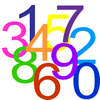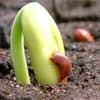
Estimating and approximating
-

-
 article
articleLet's get flexible!
In this article for primary teachers, Ems outlines how we can encourage learners to be flexible in their approach to calculation, and why this is crucial.
-
 problem
problemShedding some light
Make an estimate of how many light fittings you can see. Was your estimate a good one? How can you decide? -

-
 problem
problemSilver line
Weekly Problem 40 - 2008
A class raises money for charity by placing 10p pieces edge to edge in a 'silver line'. If the line was 25m long, how much money did they make? -
 problem
problemThunder and lightning
How far away was the lightning if the flash and the thunderclap were 6 seconds apart? -
 problem
problemCounting sweets
How might you use mathematics to improve your chances of guessing the number of sweets in a jar? -
 problem
problemGrowing
Which is larger: (a) 1.000001^{1000000} or 2? (b) 100^{300} or 300! (i.e.factorial 300) -

-
 problem
problemSquaring the circle
Bluey-green, white and transparent squares with a few odd bits of shapes around the perimeter. But, how many squares are there of each type in the complete circle? Study the picture and make an estimate.
